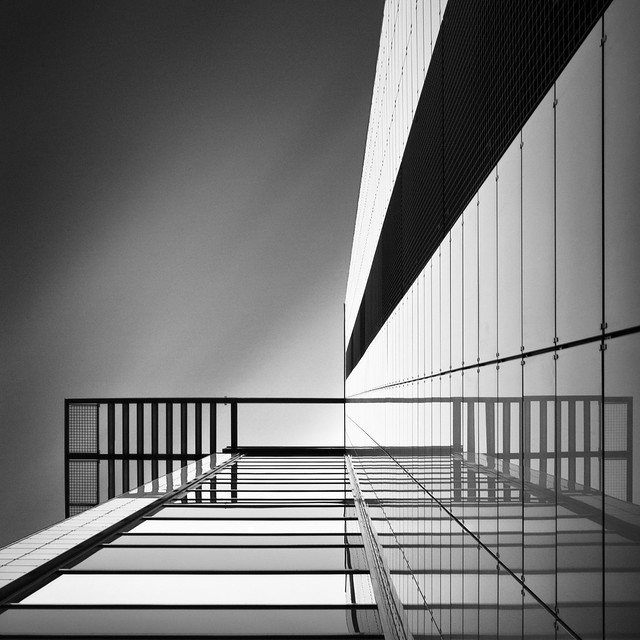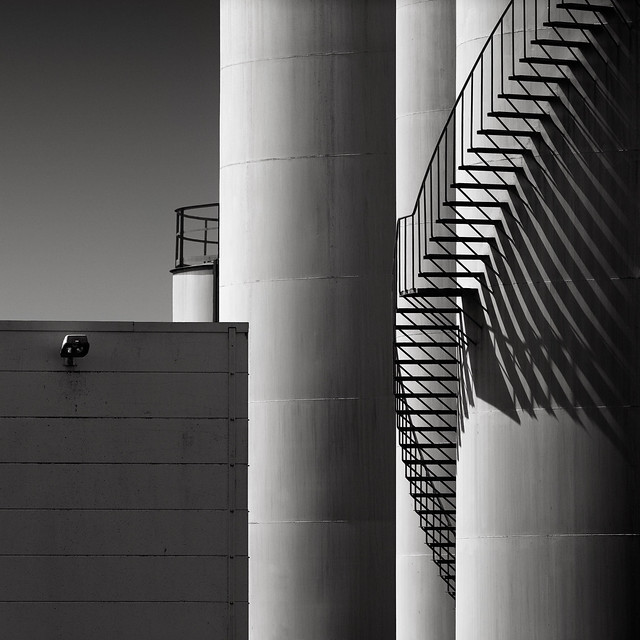Personally, I've always been more of a fan of contemporary and modern architecture from a photographic point of view, but that isn't because I am not an admirer of historical buildings, I am, it's just I prefer my frame to be filled with clean lines, sharp angles and slick curves which I feel give me more scope to be a little more adventurous with camera angles than I would with say a gargoyle and a turret. Feed me steel and glass rather than stone and slate to provide me with enough visual energy to fill up a frame and return the favour of providing you with something worth feasting your eyes on.
Ok, so I'm aware I waffle on a bit but the point is I'd rather spend a day under sunny skies playing with shadows and reflections than under stormy skies seeking out something Gothic to add to the misery of the weather. This is of course just my opinion and I';m sure there are plenty of people out there who have, can and will prove me wrong with something wonderfully Gothic shot under a sunny sky, but for the purpose of this exercise I'm sticking with my initial thoughts.
With this in mind, and coupled with the fact that it's only 15 minutes down the road, I opted to do my shoot down at Media City and it's surrounding area because it's a such fabulous place for everything I was looking to shoot. Steel, glass, granite, reflections galore and as luck would have it, blue skies yet with a cold wind to hopefully keep those frame bombers to a minimum. I'd decided that along with the 5D the only other bit of kit I really needed was my 24-70 f2.8 lens as this had enough range to capture what I was looking for and more importantly I didn't want to fall into that trap of constantly swapping lenses (because it was a bit nippy) and it meant I had to think more about working with what I had.
Media City is a 200 acre site built around The Manchester Ship Canal as it runs between Salford and Trafford Park and is home to both the BBC and ITV as well as the University of Salford and the Lowry Complex. It is also right next door to the Imperial War Museum North which never fails to produce something fresh to photograph as you can see something from a different angle every time you visit. I wont go into the history of the building here as there's plenty to read over on Wikipedia but I will tell you it's all about geometric patterns on a canvas of steel and if the sun is shining then you should be able to appreciate the bonuses. Connecting the IWM side of Media City to the Salford side are a couple of pedestrian bridges which are themselves a photographers dream as they stretch majestically skyward as they span the Ship Canal in a vision of curvature as they embrace the reflective glory of the Salford side which is an abundance of steel and glass spread across a kingdom of contemporary splendour.
My main aim was to capture a series of images that represent the area as a modern environment so it was all going to be about materials, reflections and geometric patterns but I also wanted a set of images that would work well both in black and white as well as colour as I was wanted to take advantage of the blue skies. The title of this post is to remind myself that it isn't always just about looking up because although it's the best bit of advice for this type of work, it's also a good idea to remember to look down. When I talk about looking down I don't mean at your feet as you'll probably end up walking into something, but I'm talking about over balconies, out of windows and over ledges because there's always plenty of scope for a different angle and it's all about seeking out these opportunities to add to the variety and quality of your work.













